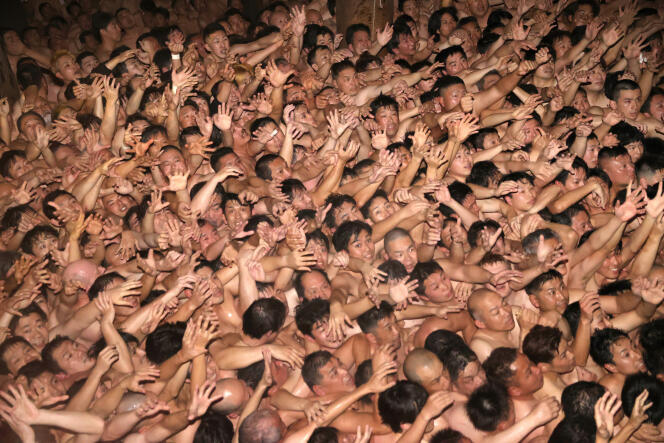


After a three-year hiatus due to the Covid-19 pandemic, the "naked festivals" (hadaka matsuri) have resumed in Japan. These festivals – some of which are thousands of years old – celebrate the purification and renewal of the agricultural cycle in February at the beginning of the lunar year. They continue to gather thousands of participants and tourists.
They have also evolved due to the country's aging population and the (timid) progress of gender equality. Women were never officially excluded from these festivities, where men, playing the lead role, dressed in simple traditional underwear called fundoshi – a long strip of twisted white cotton between the legs and tied around the loins. Women helped organize the events and took part as spectators by cheering on participants ("Washoi! Washoi!," "Go on! Go on!"). However, until recently, women were excluded from most of the rituals of this sacred exaltation.
Yet this is the first year women have participated in the religious celebrations held at most temples and shrines. Dressed in traditional hip-length jackets (happi) and white shorts, they carried long bamboo trunks on their shoulders to which the locals' wishes were attached. Nevertheless, they remain behind the men's fray. Despite widespread coverage in the press, this development is less historical than it might seem. These celebrations used to be mixed before the Meiji Revolution (1868). Espousing Western standards of decorum, the rulers of the time then forbade women from being involved in these collective discharges of energy.
In practical terms, naked festivals begin at dusk. Hundreds, if not thousands, of men of all ages, a twisted cloth (hachimaki) girding their heads to prevent sweat from obscuring their vision, and dressed in a fundoshi, begin by purifying themselves. Standing in a river or the sea, they spray themselves with icy water from small tubs.
Then, after praying for good harvests, they rush in a scramble of half-naked bodies brandishing lanterns along the sometimes snow-covered path leading to Buddhist temples or Shinto shrines. These shrines, central to local polytheism focused on harmonizing humans with their environment, resonate with cries of "Jassa joyasa!" ("Out with the evil spirits!") echoing through the surrounding woods. The melee continues inside the temple or sanctuary to catch talismans thrown by monks.
One such event takes place in Oshu, in Iwate prefecture (northeast of Honshu island), during the Sominsai festival at the Kokuseki Buddhist temple. This festival, which dates back to the 8th century and was recognized as a UNESCO intangible heritage site in 1995, used to take place on the 7th day of the lunar calendar (February 1). It was held for the last time this year, swept away by the dual effects of falling birth rates and the aging of the small town's population. "The festival requires so much preparation; we just couldn't keep up with the dwindling number of young people," explained Daigo Fujinami, the temple's superior. The naked festival will henceforth be replaced by prayer ceremonies.
You have 66.56% of this article left to read. The rest is for subscribers only.
